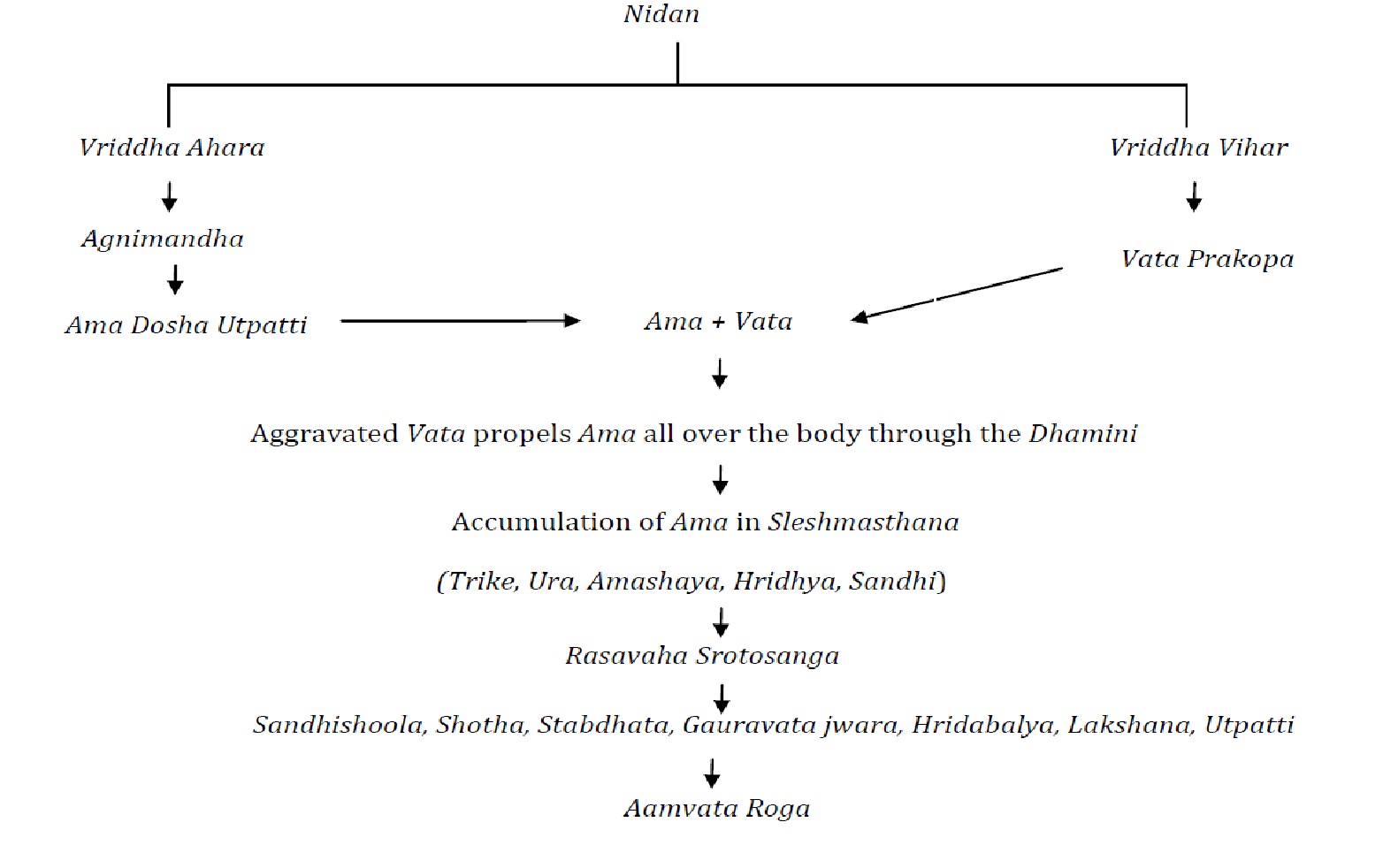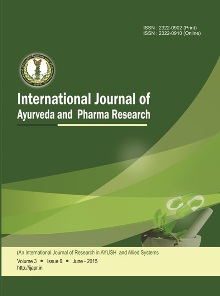Systematic Review of Amavata w.s.r. to Rheumatoid Arthritis
Abstract
The main aim of Ayurveda is to maintain the health of the healthy person and to cure the disease of a diseased person. In the present era Amavata is the most prevalent and debilitating form of joint illness. Amavata term is derived from two words Ama and Vata, the condition which is caused by accumulation of Ama and Vata and it is a Madhyam Roga Marga Vyadhi. Due to Hetu Sevan when circulating Ama combines with vitiated Vata and get accumulated in Sandhis. Vata acts as an Avaraka and blocks Shrotas the pathogenesis of Amavata occurs. Amavata is a disease of Rasvaha Shrotas and the clinical presentation of Amavata like pain, swelling, stiffness, fever, redness, general debility, fatigue, closely mimics with the special variety of rheumatological disorders called rheumatoid arthritis. In Vedic Kala, only Atharva Veda mention the Sandhi related Vyadhis. In various Samhitas the fragmented description of Amavata is available. But only in Madhav Nidan separate chapter is mentioned about the etiology, clinical features, types and prognosis of Amavata. In the disease of Amavata due to Agnimandhya, Amotpatti, and Sadhivikriti occurs. The therapy which normalizes Agni, metabolizes Ama, and regulates Vata and maintains healthy Sandhi and Sandhistha shleshma will be the supreme one of this disease. As per Ayurveda, the line of treatment for the management of Amavata as described by Chakradatta are Langhana, Swedana, Tikta, Deepaniya, Katu drugs and other Panchakarma procedures like Virechana, Snehpana, Basti Karma, Saindhvadi Anuvasana Basti etc. So, the present study deals with the systematic review of Amavata, from all the classics of Ayurveda, and its management.
Downloads

Copyright (c) 2024 International Journal of Ayurveda and Pharma Research

This work is licensed under a Creative Commons Attribution-NonCommercial-ShareAlike 4.0 International License.






